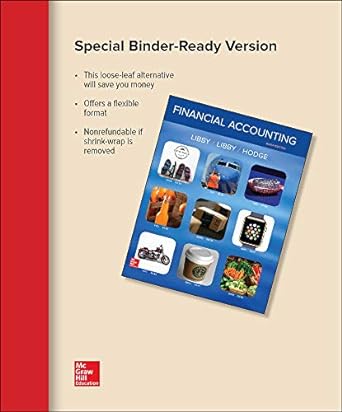Question
WoolCorp WoolCorp buys sheeps wool from farmers. The company began operations in January of this year, and is making decisions on product offerings, pricing, and
WoolCorp
WoolCorp buys sheeps wool from farmers. The company began operations in January of this year, and is making decisions on product offerings, pricing, and vendors. The company is also examining its method of assigning overhead to products. Youve just been hired as a production manager at WoolCorp.
Currently WoolCorp makes three products: (1) raw, clean wool to be used as stuffing or insulation; (2) wool yarn for use in the textile industry, and (3) extra-thick yarn for use in rugs.
Upper management would like your recommendations regarding a production decision regarding their current and proposed product lines.
Question Content Area
Continue/Discontinue
For the past year, WoolCorp has experimented with its third product, extra-thick rug yarn. The company wishes to consider whether to continue or discontinue manufacturing and selling this product. You decide to prepare a differential analysis of the income related to all three products. To begin your analysis, you review the following condensed income statement. Then scroll down to complete the differential analysis.
| WoolCorp Condensed Income Statement For the Year Ended December 31, 20Y8 | ||||||||||
| Raw Wool | Wool Yarn | Rug Yarn | Total Company | |||||||
| Sales | $210,000 | $155,000 | $167,000 | $532,000 | ||||||
| Costs of goods sold: | ||||||||||
| Variable costs | $(48,000) | $(18,600) | $(37,150) | $(103,750) | ||||||
| Fixed costs | (32,000) | (12,400) | (24,780) | (69,180) | ||||||
| Total cost of goods sold | $(80,000) | $(31,000) | $(61,930) | $(172,930) | ||||||
| Gross profit | $130,000 | $124,000 | $105,070 | $359,070 | ||||||
| Operating expenses: | ||||||||||
| Variable expenses | $(5,000) | $(7,750) | $(53,130) | $(65,880) | ||||||
| Fixed expenses | (89,000) | (78,000) | (106,200) | (273,200) | ||||||
| Total operating expenses | $(94,000) | $(85,750) | $(159,330) | $(339,080) | ||||||
| Operating income (loss) | $36,000 | $38,250 | $(54,260) | $19,990 | ||||||
Complete the following table using the data in the preceding income statement to compare the effects of dropping the rug yarn line of products. If required, use a minus sign to indicate a loss.
| Continue Rug Yarn (Alternative 1) | Discontinue Rug Yarn (Alternative 2) | Differential Effects (Alternative 2) | |
| Revenues | $fill in the blank | $fill in the blank | $fill in the blank |
| Costs: | |||
| Variable | fill in the blank | fill in the blank | fill in the blank |
| Fixed | fill in the blank | fill in the blank | fill in the blank |
| Profit (loss) | $fill in the blank | $fill in the blank | $fill in the blank |
Select the factor(s) that are important to the decision. Select all that apply. If the factor is not important to any of the decisions, select "yes" on the "Not Important" dropdown, otherwise select "no".
| Lease or Sell | Sell or Process Further | Special Price Order | Make or Buy | Continue or Discontinue | Production Bottleneck | Not Important | |
| Impact on regular prices | YesNo | YesNo | YesNo | YesNo | YesNo | YesNo | YesNo |
| Contribution margin per bottleneck hour | YesNo | YesNo | YesNo | YesNo | YesNo | YesNo | YesNo |
| Differential revenue is more than differential cost | YesNo | YesNo | YesNo | YesNo | YesNo | YesNo | YesNo |
| Supplier price is less than WoolCorps variable cost per unit | YesNo | YesNo | YesNo | YesNo | YesNo | YesNo | YesNo |
| Sunk costs | YesNo | YesNo | YesNo | YesNo | YesNo | YesNo | YesNo |
| Robinson-Patman Act | YesNo | YesNo | YesNo | YesNo | YesNo | YesNo | YesNo |
Step by Step Solution
There are 3 Steps involved in it
Step: 1

Get Instant Access to Expert-Tailored Solutions
See step-by-step solutions with expert insights and AI powered tools for academic success
Step: 2

Step: 3

Ace Your Homework with AI
Get the answers you need in no time with our AI-driven, step-by-step assistance
Get Started


